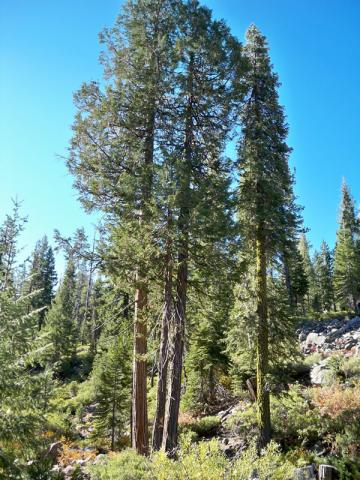
Societal Impact Statement
Non-native pathogens and pests cause high mortality to tree species globally and may imperil the future viability of associated forest ecosystems. Phytophthora lateralis, an oomycete, causes Port-Orford-cedar root disease and is a major cause of mortality in the ecologically and economically important conifer species Chamaecyparis lawsoniana (Port-Orford-cedar). The P. lateralis resistance program shows promise to help stabilize C. lawsoniana in its native range of northwestern California and southwestern Oregon, USA, and serves as a leading example of disease resistance breeding in forest trees
Summary
• A non-native, invasive pathogen, Phytophthora lateralis, has caused extensive mortality within the native range, northern California and southern Oregon USA, of Chamaecyparis lawsoniana (Port-Orford-cedar), as well as in horticultural and amenity plantings in the USA and Europe. Restoration of affected sites is contingent upon development of populations with genetic resistance. Naturally occurring genetic resistance has been identified in C. lawsoniana, and an active selective breeding program seeks to characterize and increase resistance levels.
• Two seedling root dip inoculation trials, assessed for mortality for nearly three years each, are used to examine the types and levels of genetic resistance in C. lawsoniana. Most seedlings utilized in these trials are progeny of crosses from par-ent trees that exhibited apparent resistance to the disease in earlier trials.
• Seedling trials suggest that both qualitative major gene and quantitative disease resistance occurs in C. lawsoniana. Both types of resistance to P. lateralis appear to be present at levels high enough to be immediately useful for restoration and reforestation. The data suggest that the qualitative resistance is conditioned by a single major gene (designated here as Pla), but nothing is known about the number of genes involved in quantitative disease resistance.
• Seedling progeny from resistant parent trees in containerized seed orchards are now being used for restoration and reforestation. Resistant seedlings or clones could also be used to re-establish C. lawsoniana in urban forests.
For questions or inquiries about this project, email Richard Sniezko, at richard.sniezko@usda.gov

